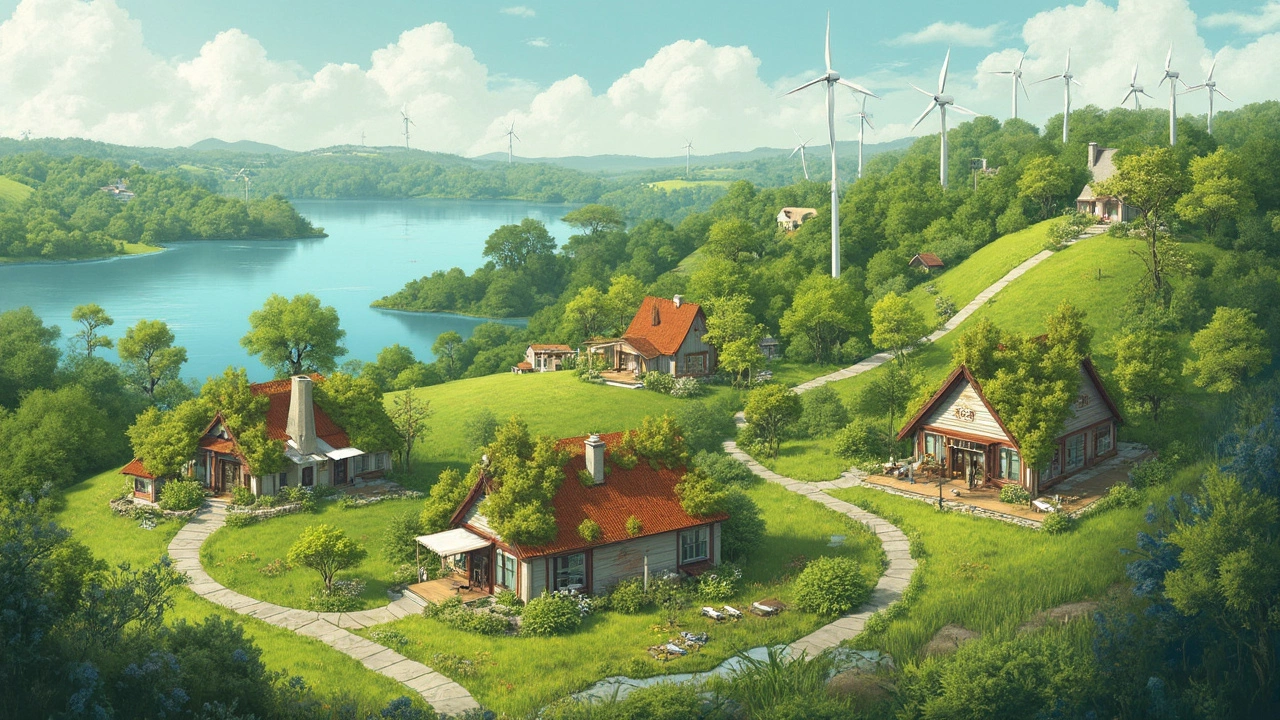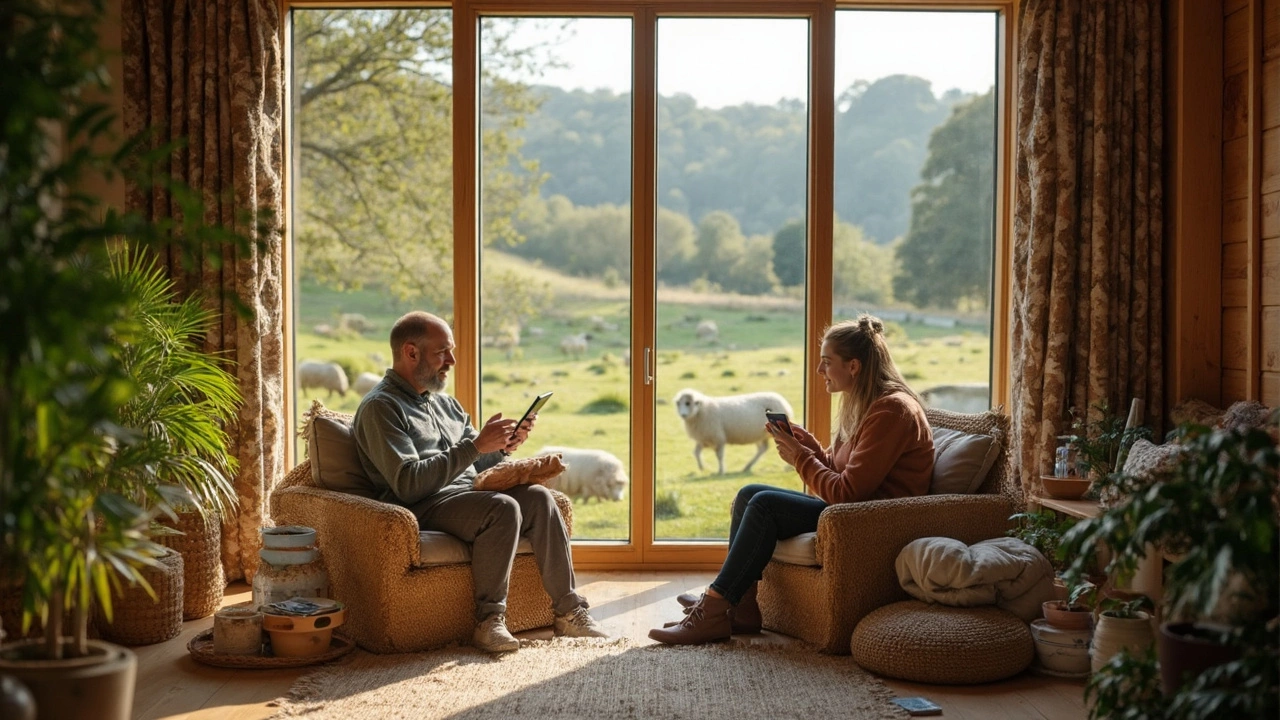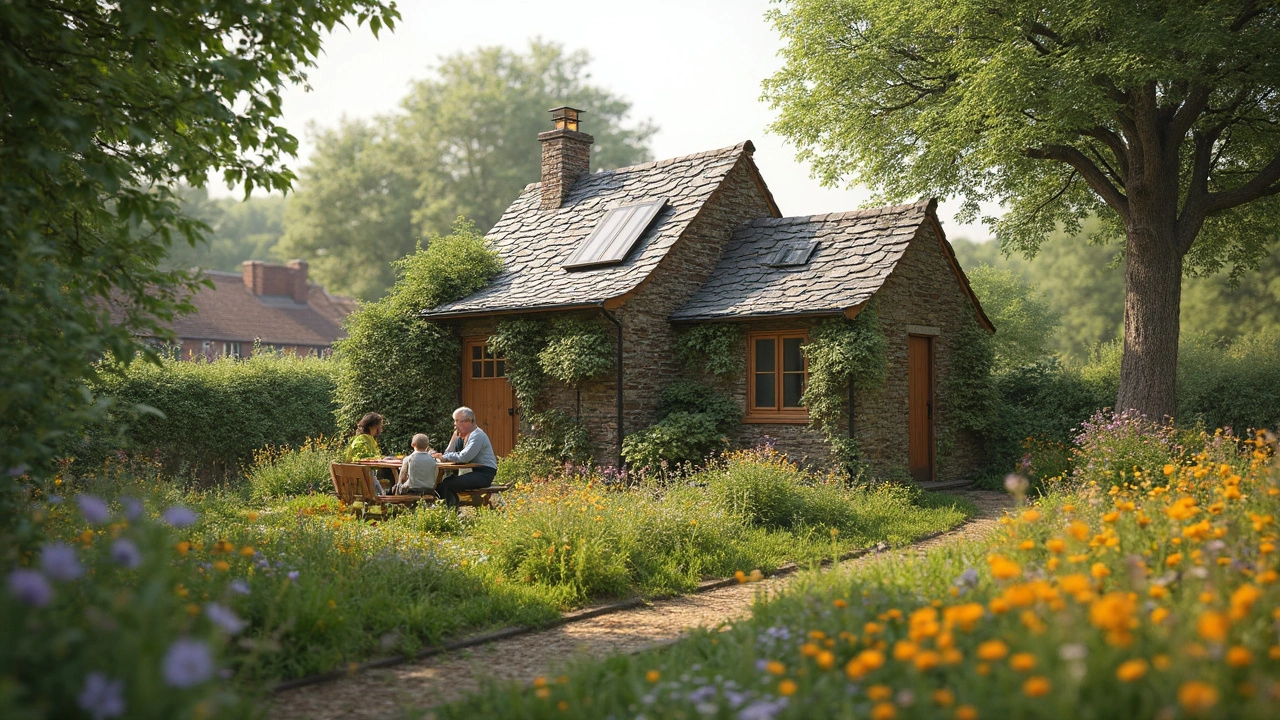Eco-Friendly Cottages: Where’s the Greenest Spot on Earth?
17 May, 2025Everyone wants a getaway that’s good for the soul—and the planet. But “eco-friendly” isn’t just a trendy sticker. When it comes to finding the greenest places on Earth, the definition goes deeper than scenery and solar panels. It’s about whole communities making real moves to protect the environment for the long run.
Think you know where the cleanest, greenest spot is? What surprises most people: it isn’t always the lushest jungle or the cabin farthest from the city. Sometimes, the most sustainable places are those where people have figured out how to live in balance with nature—even when it’s right on their doorstep. The cottages in these locations offer a front-row seat to how eco-lodging can be comfy, affordable, and genuinely environmentally friendly—no greenwashing hype.
- What Defines an Eco-Friendly Place?
- The Greenest Regions in the World
- How Eco-Friendly Cottages Make a Difference
- Staying Green: What to Look For
- How Your Stay Can Help the Planet
What Defines an Eco-Friendly Place?
When you hear "eco-friendly," what’s the first thing that comes to mind? Solar roofs, maybe, or recycling bins? Those help, but they don’t tell the whole story. A truly eco-friendly place goes beyond just having a few green features. It means the whole setup—community, cottages, and environment—runs in a way that actually makes a difference for the planet.
The backbone of an eco-friendly place is simple: less impact, more responsibility. This means cutting back on pollution, using resources like water and energy wisely, and protecting the local plants and animals. In some countries, like Costa Rica, about 99% of the electricity comes from renewable sources. In places like Sweden, most people recycle and compost, and public transport is the norm. These places aren’t just promoting a few green ideas—they’re changing the way people live every day.
So what does this mean for visitors? When you stay in an eco-friendly cottage, look for things like:
- Renewable energy (think solar panels, wind turbines, or hydropower)
- Composting toilets and greywater recycling
- Native landscaping (meaning they plant local species, not water-hungry lawns)
- Low-impact construction using natural or recycled materials
- Support for local food growers and artisans
To give you an idea how some countries stack up, here are a few who lead the world in eco practices:
| Country | Renewable Energy % | Waste Recycling Rate % | Protected Land % |
|---|---|---|---|
| Costa Rica | 99 | 10 | 27 |
| Sweden | 56 | 49 | 15 |
| Bhutan | 100 | NA | 72 |
The world’s most sustainable places put the planet first, not just by rule, but by daily habit. It's not about being perfect, but about every little effort adding up and making a lasting mark.
The Greenest Regions in the World
When people ask about the most eco-friendly place on Earth, a few famous regions quickly come to mind—and with good reason. For starters, Costa Rica takes the crown more than once for its serious dedication to nature. The country protects over a quarter of its land as national parks, runs on more than 98% renewable electricity, and has even committed to becoming carbon-neutral. In places like Monteverde or Osa Peninsula, you’ll find eco-cottages tucked right into lush rainforests and powered by solar panels. These cottages usually compost, collect rainwater, and help support reforestation work around them.
But it’s not just Central America in the spotlight. Up north, Sweden’s green game is strong. The country set its sights on zero fossil fuel energy way back, and many rural areas run on wind or hydro power. Swedish eco-cabins are famous for their smart insulation and “off-the-grid” setups. One popular example: the Treehotel, which merges cool design with a commitment to the environment.
Over in New Zealand, strict environmental rules keep nature in good shape for both locals and visitors. Around Queenstown and the Otago region, eco lodges make use of recycled materials, natural heating systems, and waste management plans that keep waterways clear. Staying here is popular with folks who want adventure but also care about leaving no trace.
And for a different vibe, Slovenia is a hidden gem. In 2016, it was the world’s first country to be named a Green Destination. Their eco-friendly cottages are serious about using local materials and managing waste—the place even has a national Green Scheme where certified inns and cottages must meet tough standards.
What do all these regions have in common? Locals and owners don’t just talk about sustainability—they actually build it into the day-to-day, from food to energy. If you’re picking a spot, these places don’t just show off green labels; they set an example for what eco-friendly cottages can really mean.

How Eco-Friendly Cottages Make a Difference
What’s so special about eco-friendly cottages? They go beyond being cute or rustic. These places actually cut down waste, save energy, and prove you don’t need to rough it to live sustainably. The main secret is a mix of smart design, low-impact materials, and small changes that add up over time.
Most eco-friendly cottages use local wood, recycled stuff, or natural materials like bamboo and hemp. Some even have living roofs, which are just as cool as they sound—grass and plants growing right on the cabin’s top, helping keep things cool in the summer while absorbing rainwater. Builders aim for less concrete and plastic, which means a lower carbon footprint from day one.
Energy is another biggie. A lot of these cottages run totally on solar power, paired with things like water-saving toilets or showers, and LED lighting everywhere. In Sweden, for instance, many eco-cottages have built-in heat pumps and triple-glazed windows, although the price tag is higher up front. Here’s a quick look at some features you’ll find in truly green cottages around the world:
- Rainwater harvesting systems for the toilet and garden
- Composting toilets that turn waste into garden fertilizer
- Natural ventilation instead of air conditioning
- Solar or wind power for electricity and heating
- Use of reclaimed wood and other salvaged materials
- No single-use plastics—expect glass, metal, or biodegradable items only
Real-world benefits? Less waste to landfill, less energy sucked from the grid, and lower water usage—sometimes up to 60% less compared to regular stays, according to stats from the International Ecotourism Society. Check out the difference that a few sustainable upgrades can make:
| Feature | Standard Cottage | Eco-Friendly Cottage |
|---|---|---|
| Average energy use/year | 8,000 kWh | 4,000 kWh |
| Water use/day | 150 liters | 60 liters |
| % plastic waste per guest | 20% | 3% |
Many of these cottages also help wildlife by using native plants instead of lawns, and by setting up bird or bee hotels. This way, your holiday spot actually restores nature instead of draining it. If you care about the local community, you’ll notice some eco-stays support area farmers or fund reforestation, so your booking does more than just pad someone’s wallet. It backs a change that keeps the planet in better shape for everyone.
Staying Green: What to Look For
If you want to pick a cottage that’s truly low-impact, you’ve got to know what signs to look for beyond just a recycled-paper sign on the door. Not all "eco-friendly cottages" are created equally. Some live up to the label, some just talk the talk.
The real difference comes down to daily operations and thoughtful design. The truly green locations have a bunch of practical things in common. Here’s a quick rundown of features that really matter:
- Eco-friendly cottages often run on renewable energy—like solar, wind, or hydro power. In places like Costa Rica, about 99% of the country’s power comes from renewable sources, and many local cottages are tapped in.
- Look for rainwater catchment systems or on-site wells. In Australia, many eco-lodges use rainwater tanks for everything from showers to dishwashing, cutting down on strained city water supplies.
- Responsible cottages handle waste smartly. Composting toilets, on-site recycling, and zero-waste policies are good clues. A favorite in Scandinavia: high-efficiency heat pumps paired with triple-glazed windows to cut winter heating bills (and energy use) by up to 50%.
- Green cleaning products, local and organic food sourcing, and non-toxic construction materials. If your cottage gives you a breakfast made with eggs from the backyard and sheets washed with plant-based detergent, you’re in the right spot.
- Wildlife-friendly landscaping means leaving plenty of room for native plants and animals, not just manicured lawns. In New Zealand, it’s normal to see eco-cottages surrounded by pollinator gardens instead of grass-only yards.
If you want to check a cottage’s real impact, many have sustainability certifications. Look for proof like the Green Key, LEED, or EarthCheck badge. These are tough to earn—places must keep up strict water, waste, and energy standards to get (and keep) those certificates.
Here’s a side-by-side look at what you might find at different types of cottages:
| Feature | Typical Rental Cottage | Eco-Friendly Cottage |
|---|---|---|
| Energy | Grid, fossil fuels | Solar, wind, or micro-hydro |
| Water Use | Municipal supply only | Rainwater catchment, filtered wells |
| Waste | Standard septic, landfill | Composting, recycling, waste audits |
| Food | Shipped in, generic | Local, organic, on-site gardens |
| Cleaning/Care | Chemical cleaners | Eco-specific brands, plant-based |
When booking, don’t be shy—ask hosts where their power comes from, how they manage waste, and what steps they take to lower their footprint. The more info they can give, the better they probably are. If you see the certifications and they can answer those questions, you’re onto a winner.

How Your Stay Can Help the Planet
Choosing the right place to sleep on your trip actually makes a real difference. When you pick eco-friendly cottages over regular ones, you support small businesses that put the planet first. These places use less energy, save water, and do everything they can to shrink their footprint. That’s better for the air, the water, and even the neighbors who live nearby.
Let’s get practical—your stay isn’t just about having a good time. Here’s how you can tip the scales for the planet while not skimping on comfort:
- Won’t waste, don’t want. Many eco-cottages encourage you to use what you need, not more. Skip daily towel swaps and long showers. Even these small choices stack up.
- Support what’s local. Buying food or souvenirs from the area (or at the cottage) keeps money nearby and cuts the pollution of stuff shipped from far away.
- Refuse single-use trash. The best places ditch plastic bottles, mini-soaps, and all those pointless extras. Bring your own reusable gear and say no to freebies you don’t need.
- Join in and learn. Many eco-friendly spots offer walks, talks, or volunteering—think tree planting or hands-on talks about wildlife. Getting involved helps you see your impact and connect with the place.
Want proof this matters? Here’s a quick look at how eco-friendly accommodations compare to regular ones on key impacts:
| Typical Hotel | Eco-Friendly Cottage | |
|---|---|---|
| Average Energy Use per Night (kWh) | 45 | 18 |
| Water Use per Guest (liters) | 240 | 90 |
| % Waste Recycled | 20% | 75% |
| Local Sourcing Rate | 15% | 70% |
You don’t need to overhaul your lifestyle to do good. Where you stay, what you ask for, and what you buy all add up. Think of it this way: every sustainable choice at your cottage sets an example, and the ripple effect can reach way beyond your vacation.

 by
by